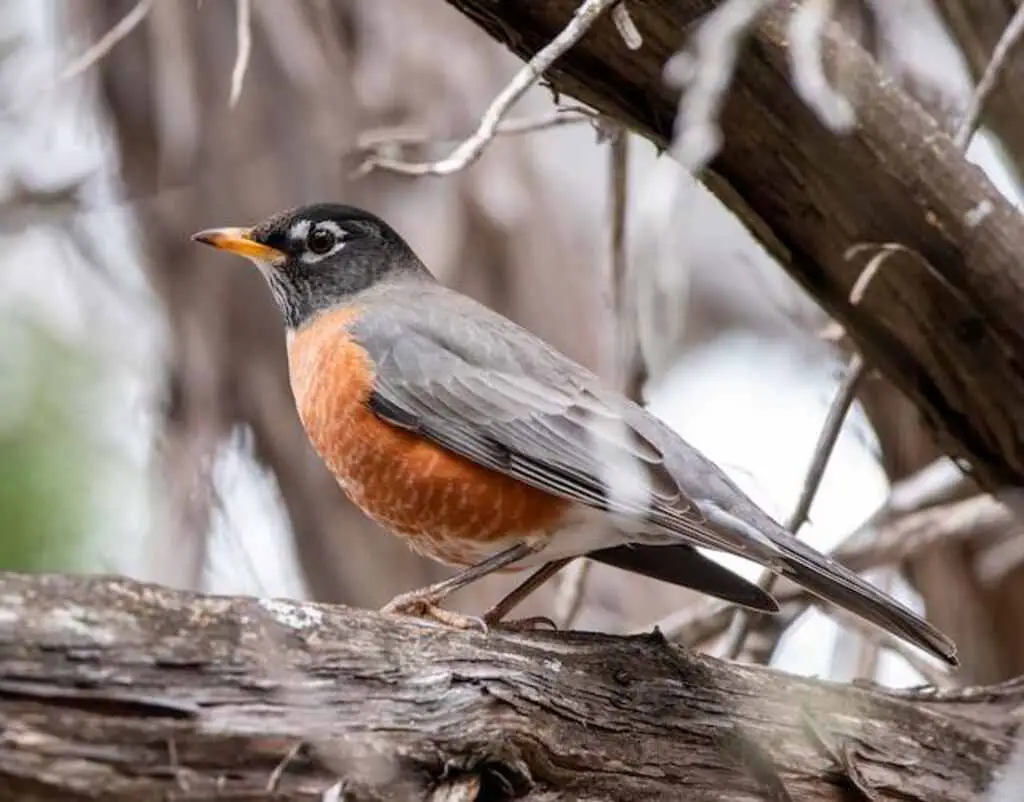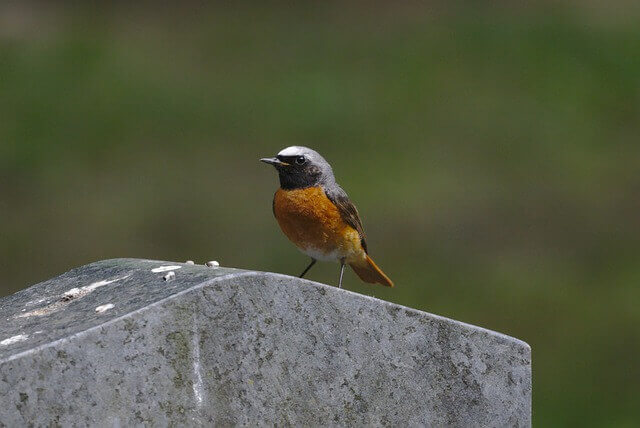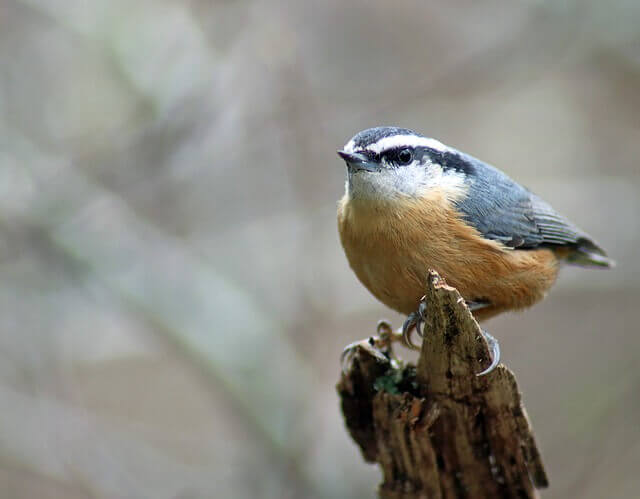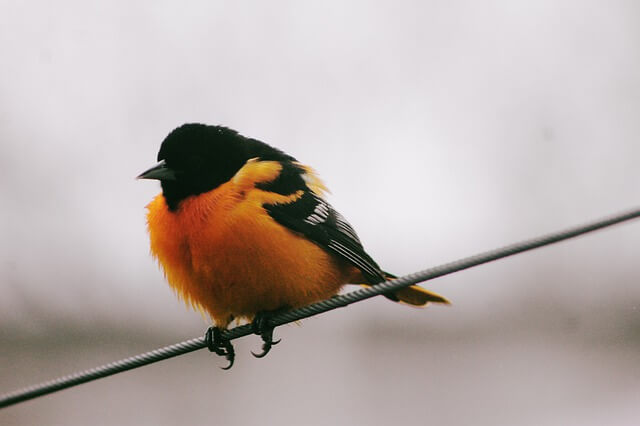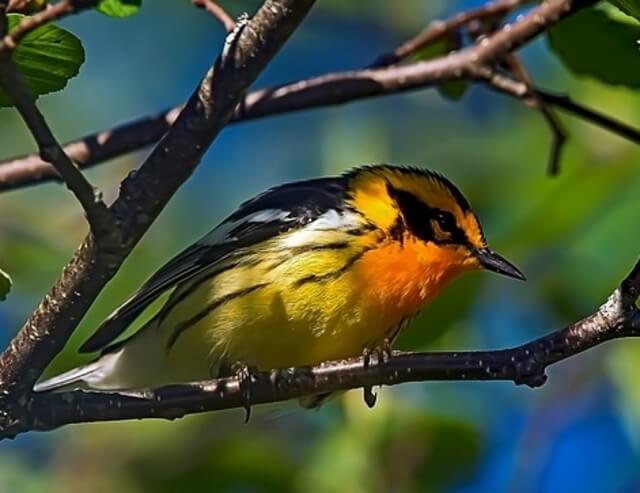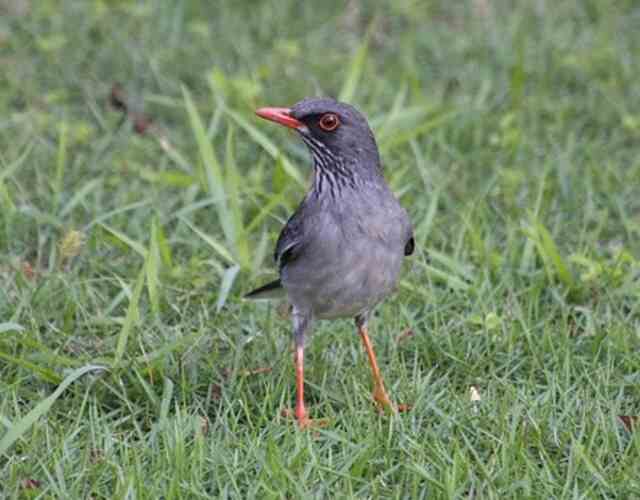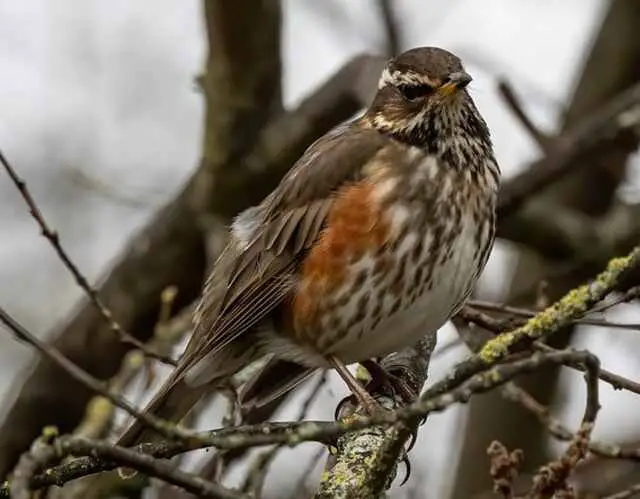The American Robin, also known as (Turdus migratorius) are an important part of our bird communities. If you ask a birder what birds have the highest frequency, they will most likely tell you that Robins are the most common bird seen in backyards.
In this article, we will explore, and take a look at 16 birds that look like robins but aren’t, and you might be surprised to find out that there are a few birds that look similar to them. Take a look at the list below for similar birds.
Table of Contents
Differentiating Bird Species: Why It Matters?
Distinguishing between bird species is crucial for understanding the natural world, preventing misidentification, and enhancing bird watching. By identifying birds’ habitats, behaviors, and diets, we gain insights into their interactions with the environment.
Misidentification leads to incorrect observations and data, impacting our understanding of bird populations and conservation. Learning to distinguish between species enhances bird watching, a popular hobby that deepens our appreciation of nature.
The American Robin: Iconic Bird of Spring
The American Robin is a beloved bird in North America and symbolizes spring and renewal. Its arrival in the spring is eagerly awaited by bird watchers and nature enthusiasts. It has a bright red breast, gray-brown back, and white underbelly, and can be found in woodlands, parks, gardens, and suburban areas.
The American Robin is famous for its behavior of pulling earthworms from the ground, and can often be seen hopping across lawns in search of food. It has sharp eyesight and a strong beak, making it a skilled hunter.
Birds That Look Like Robins But Aren’t
Spotted Towhee
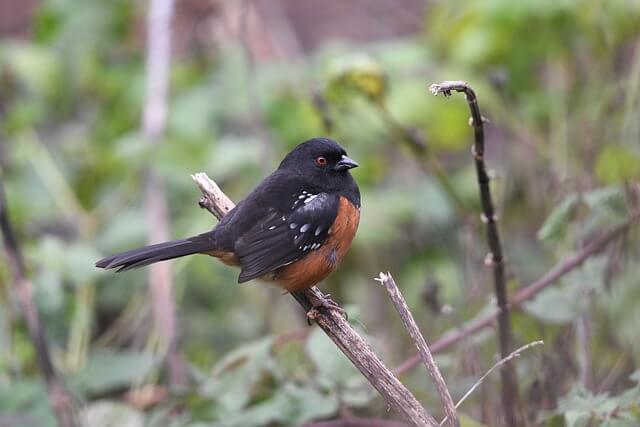
The Spotted Towhee is a beautiful and stunningly bright robin like bird with an orange and black chest. The Spotted Towhee can be found in varied habitats, both on islands and along coastal areas. It is a frequent visitor to marshes and thickets, where it nests during dry and cold springs and summer seasons and returns to its natal forest to feed during winter.
On islands, where it is an abundant bird, it is most often found nesting in tall trees, but has also been observed nesting in hanging bird houses, bird feeders, cliff edges, balconies, pavilions, mangroves, crevasses, cliffs, rock walls and rooftops. They are nocturnal animals and are also nocturnal when it comes to mate selection.
During the nighttime hours, they choose to nest where there is a tree or bush that offers them plenty of cover, and they can even hide their eggs in a cavity made for nesting. When it comes to eating, they only consume berries, leaf buds, small insects, spiders, beetles, and invertebrates.
Varied Thrush
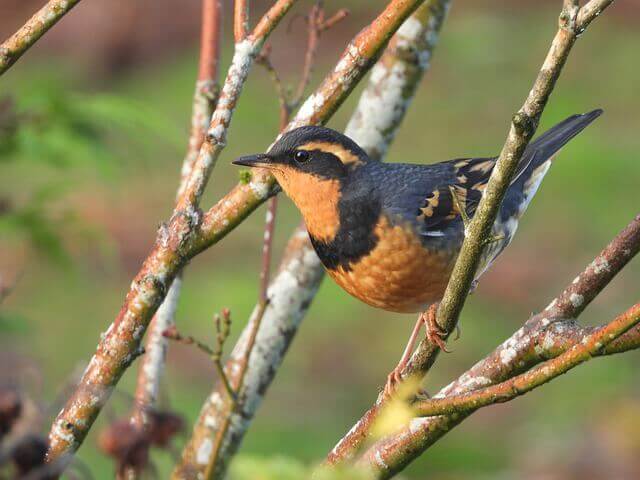
The Varied Thrush birds are fairly large, almost featherless, birds of a genus called Ixoreus. They are native to North America but have a global distribution, and are often confused with other common songbirds, such as the Robin. However, they are actually very different in body shape and size, and their songs are quite different too.
They are the smallest of the North American songbird subfamily and belong to the family Turdidae. Like most passerines, these birds have evolved with a wide distribution and adapted to local conditions.
In addition, Varied Thrush are also nocturnal, spending the majority of the year flying through the night sky. They are nocturnal for the most part, except for the time they eat and nest. They breed during the springtime and lay eggs in early summer, where they spend the rest of the year.
Related Posts: How to Attract Thrushes to your Garden? The Best Tips!
Eastern Towhee
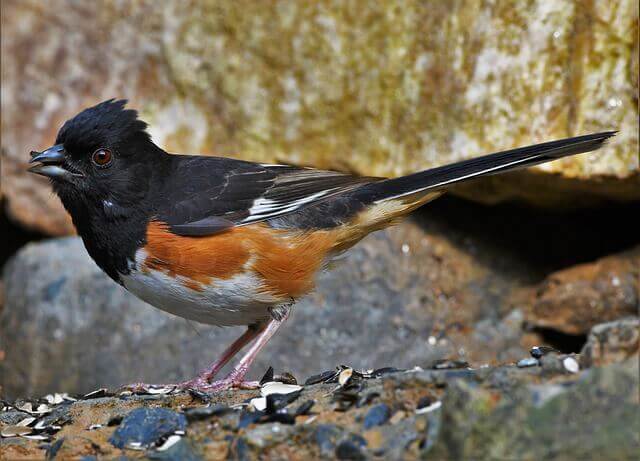
The eastern Towhee is a fairly large-sized New World sparrow, with bright red and orange feathers that resembles the Robin. A common feature of Towhee birds is their tendency to nest near or in abandoned beech trees.
This may be because these birds are particularly adept at making nests in abandoned tree branches and hollow logs; these features may account for their relatively frequent appearance (especially near water, trees, power lines, etc.).
When the eastern Towhee was first recorded in 1774, it was thought to be part of a separate species, which was part of the same family as the common robin. Subsequently, a few specimens were recorded south-east of the continental divide in what is now northeastern Ohio and southwestern Michigan.
Related Posts: How to Attract Towhee to your Yard? Expert Tips!
Common Redstart
The Common Redstart, is a species of the Parulidae family. They are often confused for the Robin, because of its black plumage, and orange breast. These birds are usually found from Central to Northern Florida. It can be found in large cities, suburbs, small towns, and even farm fields. The male tends to be very colorful and is quite dominant, but the female is much quieter and not as aggressive.
A great place to use as a bird feeder is right on your front porch or patio. You can also find these birds around large trees in backyards. They are a very popular target for bird watchers because of their vibrant colors and their ability to add life to any surroundings.
These birds love to eat berries, insects, and other types of seeds. The female will often flutter her wings and make a call to attract a mate. With these traits and beautiful coloration, it is no wonder that this bird has become a popular species in Florida.
Black-headed Grosbeak
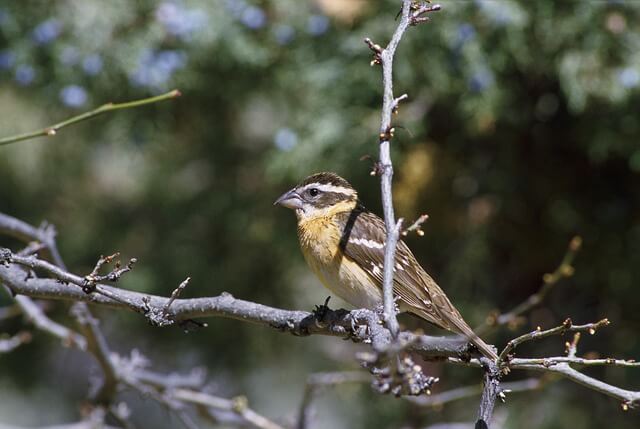
The Black-headed Grosbeak is a large finch that can be found in most of North America, from the northern United States to the southern United States. They have been known to breed as far north as Alaska and Canada. They are often confused for robins because of their similar size, coloration, and range. However, the two birds have very different diets and habitats.
Robins typically eat insects, while grosbeaks eat seeds from fruit trees. Robins live mostly near yards, parks, gardens, water sources like ponds or streams, while grosbeaks stay in forested areas to find food. The black-headed grosbeak’s range is from the Eastern United States to Northern Mexico.
They stay in forested areas and near fruit trees or woodlands. Their diet is mostly made up of seeds from fruits like apples, plums, peaches, cherries and berries. Grosbeaks have a high-pitched voice, but it isn’t as loud as that of a robin’s voice.
Red-Breasted Nuthatch
Red-breasted nuthatches are birds of the Northern Hemisphere that inhabit North America, Europe, and Asia. They live in forests and other wooded areas, where they can find plenty of trees to nest in.
Red-breasted nuthatches feed on insects such as beetles, flies, ants that they often find on tree branches. They will also eat seeds or nuts if there is a lack of food sources available to them during the winter months.
The males are distinguished by their distinctive red breast and black crown and stripe over the eye, while the females have white underparts with a gray or brown back. The nuthatches’ confusion with robins can be attributed to its red breast.
Related Post: How to Attract Nuthatches to your Backyard? Expert Tips!
Baltimore Oriole
The Baltimore Oriole is a North American songbird, native to the eastern United States. The range of this bird is from southern Canada and Maine in the north, south to northern Florida and central Texas. They are also found on some Caribbean islands, as well as Mexico’s Gulf Coast.
Baltimore Orioles live in deciduous or mixed forests with nearby water sources such as rivers, lakes, ponds or streams. Their diet consists mainly of insects including ants, beetles and spiders which they for age for on the ground. Baltimore Orioles are territorial birds and will defend their territory aggressively by swooping at an intruder with their wings, pecking or jabbing them with their beaks.
The Baltimore Oriole looks very similar to the American Robin. It is about the same size and has a bright orange chest, and belly, with orange on its shoulders and tail feathers and a black head.
Related Post:
- Baltimore Oriole Bird Facts (with Photos, ID & Info)
- 21 Birds That Eat Grape Jelly (with Photos, ID & Info)
- 21 Birds That Eat Oranges (with Photos & Details)
Bullocks Oriole
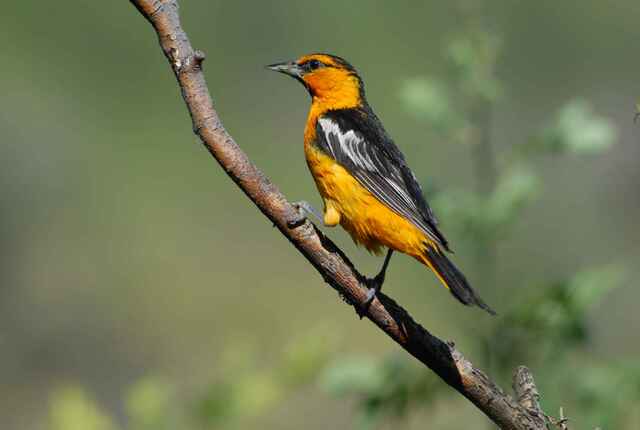
The Bullocks Oriole is a medium-sized, slender bird that breeds in the southwestern United States and northern Mexico. It ranges from west Texas to eastern Arizona, southern New Mexico, western Oklahoma and northeastern Mexico. Bullocks Orioles are migratory birds that spend winters in central or South America. They live mainly in riparian woodlands near water sources like streams and rivers, where they can find food.
The diet of the orchard oriole consists mainly of insects such as grasshoppers, beetles and ants but also includes some fruit including figs, wild grapes and mulberries. There are many similarities between the American robin and the orchard oriole. The orchard oriole, also has a similar habitat to that of the American robin.
They both live in yards, gardens, parks, open country areas where they can find plenty of food such as insects such as grasshoppers, beetles and ants but also includes some fruit including figs, wild grapes and mulberries. The plumage is another similarity between these two birds, they look almost identical.
Related Post: 12 Birds That Look Like Orioles (How to Identify Them)
Blackburnian Warbler
The Blackburnian Warbler is a bird of the New World warbler family. They are native to eastern North America, breeding in deciduous and mixed forests from southeastern Canada south to northern Florida, with the majority of their range west of the Appalachian Mountains.
In winter, they migrate primarily through Central America and northern South America into Colombia and Venezuela. They feed on insects during breeding season and berries while migrating or wintering.
The Blackburnian Warbler is an American bird that can be mistaken for the American Robin. It has an orange red breast like the robin, but it has a white belly, whereas the robins belly is red. The birds also have different call notes and vocalizations.
Red-legged Thrush
The Red-legged Thrush is a striking bird native to the Caribbean. With its deep blue-black plumage and bright red legs, it can be found in a variety of habitats, including forests, gardens, and parks. The Red-legged Thrush feeds on a diverse range of food items, including fruits, insects, and small invertebrates.
Unfortunately, habitat loss and poaching are threats to this species, which requires conservation measures to protect it. Compared to the American Robin, the Red-legged Thrush has a different coloration and smaller size. While the American Robin is known for its reddish-orange breast and gray back, the Red-legged Thrush has a blue-black plumage and red legs.
Moreover, the Red-legged Thrush is only found in the Caribbean, while the American Robin is widespread throughout North America. However, both birds share similar behaviors, such as foraging on the ground for food and singing beautiful songs.
Brown-headed Thrush
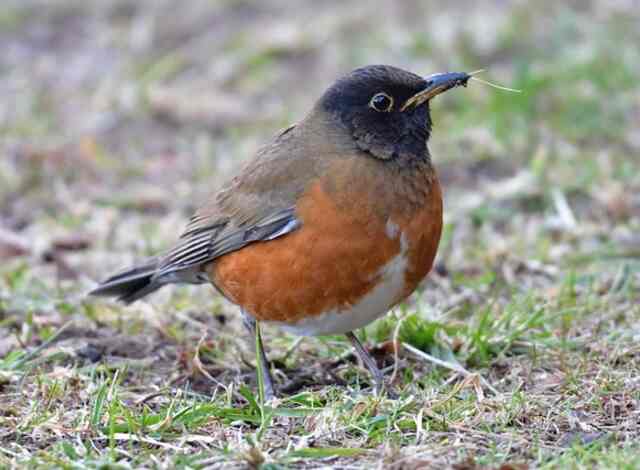
Brown-headed Thrush is a migratory songbird that breeds in northern Asia and winters in southern Asia. It inhabits forests, shrublands, and gardens, and feeds on insects, berries, and fruits. This thrush has a brownish head, back, and wings, with a white underbelly and a distinctive black tail. Its melodious song is well-known.
The American Robin and Brown-headed Thrush share some similarities, such as reddish-orange breasts and brownish upperparts. However, they have differences such as size, coloration, and range. The Brown-headed Thrush is smaller and darker, lacking a white eye-ring.
The American Robin is found throughout North America, while the Brown-headed Thrush breeds in northern Asia and winters in southern Asia. Both species consume a diet consisting of fruits and insects.
Redwing
The Redwing is a striking thrush that inhabits much of Europe and Western Asia. These birds are known for their rusty-red flanks and bold white eyebrow stripes, which contrast sharply with their gray upperparts. Redwings prefer to live in open woodland habitats, where they can forage for insects, fruits, and berries.
In the winter, many Redwings migrate south to milder climates, often joining flocks of other thrushes and birds. Compared to the American Robin, the Redwing has a slightly smaller and more compact build, with a shorter tail and more rounded wings.
While both birds share a similar reddish-orange breast coloration, the Redwing has a more defined rusty-red color on its flanks, and a distinct white eyebrow stripe. Additionally, the Redwing is more commonly found in Europe and Asia, while the American Robin is primarily found in North America.
Fieldfare
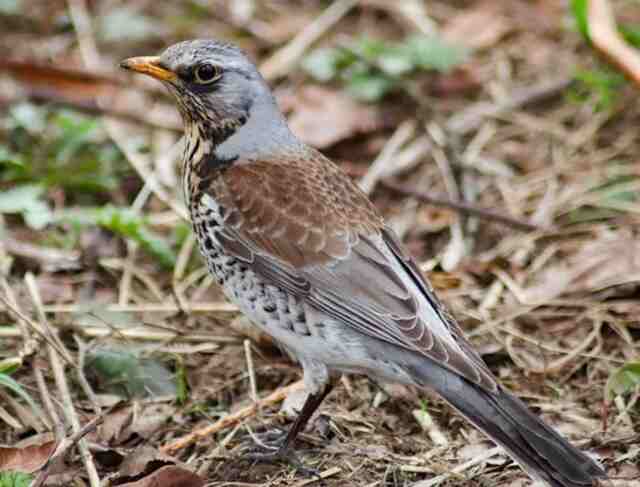
Fieldfares are medium-sized thrushes that breed in Europe and Asia and migrate to winter in Africa and the Middle East. They prefer open habitats, such as farmlands, pastures, and orchards, where they can find insects, earthworms, and berries to eat.
Their plumage is mostly gray-brown with a chestnut-brown back and wings, and a distinctive white rump. Fieldfares have a flute-like song and a harsh, chattering call. Compared to the American Robin, Fieldfares are slightly smaller and have a more muted coloration.
While both birds have reddish-orange breasts, the Fieldfare’s is less bright and often speckled with brown. Fieldfares also have a more extensive white eye stripe and a more prominent white rump. Additionally, Fieldfares are primarily migratory birds, while American Robins are non-migratory in much of their range.
Song Thrush
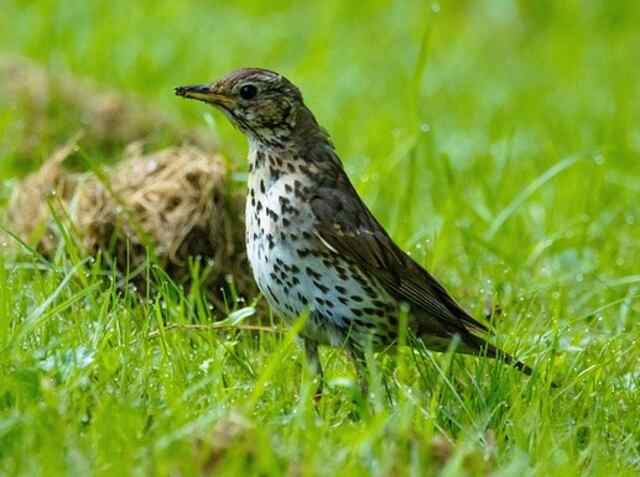
The Song Thrush is a widespread bird found throughout Europe, Asia, and Africa. They prefer woodland and forest habitats with open areas for foraging, and can also be found in gardens and parks. Their diet consists of insects, earthworms, and fruits, and they are known for their melodious singing voice.
In the UK, their numbers have declined due to loss of habitat and changes in farming practices. Compared to the American Robin, the Song Thrush is smaller and has a more speckled appearance on its chest. While both birds have a similar diet, the American Robin is found exclusively in North America and prefers open habitats such as lawns, fields, and gardens.
Additionally, the American Robin has a more robust and upright posture, and is known for its distinctive red breast. Overall, both birds are beloved for their beauty and cheerful songs, but have distinct differences in appearance and habitat.
Mistle Thrush
The Mistle Thrush is a medium-sized bird that is found in much of Europe and Asia. It prefers open woodland and forest edges, but can also be found in gardens and parks. Its diet consists of insects, berries, and other fruits. One interesting fact about the Mistle Thrush is that it is known for its habit of defending its feeding territories aggressively, often chasing away other birds.
Compared to the American Robin, the Mistle Thrush is slightly smaller and has a more subdued coloration, with a grayish-brown back and white underparts. It also has a longer tail and a more prominent eye ring.
While the American Robin is known for its cheerful and melodic song, the Mistle Thrush has a harsher, more piercing call. Both birds are found in similar habitats and have similar diets, but the Mistle Thrush is more commonly found in Europe and Asia, while the American Robin is found throughout North America.
Related Article: How to Attract Robins to your Yard? The 7 Best Tips!

